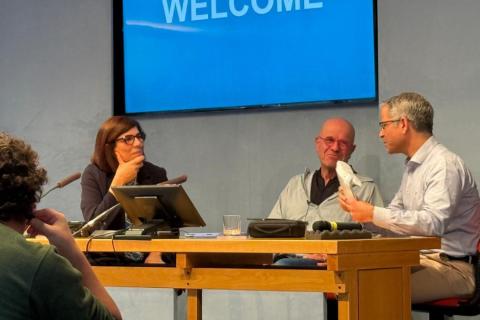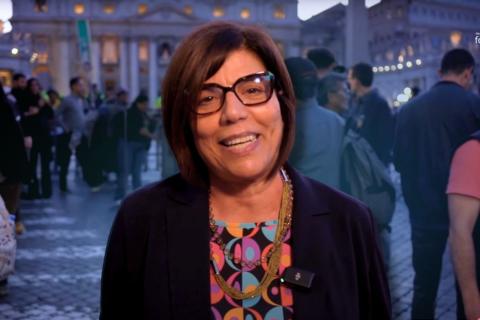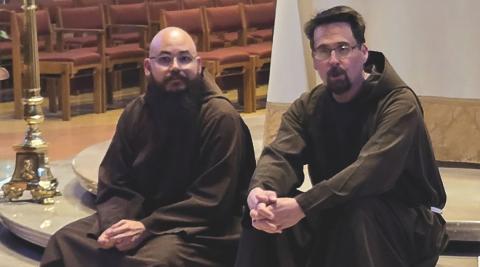Recognizing and naming our feelings can be a first step to growing emotionally and spiritually

Photo by Littleny | Dreamstime.com
“There is no need to be scared.” Have you ever heard anyone say this to you when you were afraid of something? How did it make you feel?
The other day, I had an important presentation to deliver at work. I was scared that it would go wrong. Over a cup of coffee, I told one of my friends how I was feeling. Hearing her say that there was no need to be scared wasn’t very helpful to me at that time. I wasn’t quite sure what to do with that statement, because I knew I couldn’t just will my fear away.
Basic neurophysiology explains that we cannot stop our emotions from arising, because they are triggered in a part of the brain, to which the thinking brain has no access to in the first instance. Emotions manifest themselves via neurotransmitters and hormones, which in turn become manifest as physical sensations (muscles tensing, stomach churning, heartbeat changing and so on).
The emotional processing center (the limbic system) doesn’t ask the thinking brain (the cortex) for permission to let an emotion arise. Once we know this important bit of information, we will probably understand why it is not helpful to tell others or ourselves “there is no need to feel like this, that or the other.”
Emotions come and go as they please. They are internal manifestations of tremendous physical and mental energy that rise up within us and ask for expression. Suppressing that energy can lead to physical, mental, spiritual or social discomfort. Learning to express it in a healthy way can improve personal well-being and social relationships.
One way of doing this is by slowing down, bringing the emotion to our awareness, allowing it to be there, and tuning into our body whilst breathing deeply and slowly. Doing that allows us to “ride the wave of an emotion.” We allow it to express itself within us, while we pay attention to it.
In this way, we also clear the access to our thinking brain for deciding if and how to express it externally. While we can’t choose our emotions, we can choose our response to them. In this way, we will grow into mature human beings who are comfortable with their emotions and personal needs, but not dominated by them.
A lifetime’s journey
Once we have learned that, emotional and spiritual growth requires that we choose to look beyond our personal feelings and needs, toward the needs of others. This may entail lifetime learning, and some of us whose needs have not been met adequately as children, and whose feelings have never been validated, will need the kindness and compassion of healing.
Living other-centered is a characteristic of people who practice mature love. Mature love is a verb rather than a feeling. It tends to express itself in care, service and compassion that is not based on an emotional payoff for ourselves, but on the awareness of the intrinsic worth that is at the core of all of us.
Looking beyond ourselves, when the emotional payoff isn’t there, requires the ability to regulate undesired emotions. There are many powerful examples in psychology, the world religions and wisdom teachings on how to deal with pain and suffering.
In my own experience, one of the greatest insights into knowing what to do with negative events in our lives comes from Chiara Lubich. She often speaks about recognizing in every suffering the face of the abandoned Jesus on the cross.
What does she mean by that? When nailed to the cross, Jesus not only experienced tremendous physical pain, but also felt abandoned by nearly all his friends, and most of all by God, whom all his life he had described as his Father and of whom he said: “The Father and I are one” (Jn 10:30).
The Church teaches that in the cry just before his death, “My God, my God, why have you forsaken me?” (Mt 27:46), every type of suffering that we are able to experience, past and present, is summarized.
Jesus, the Christ, in the face of such distress, did not rebel, blame, run away or deflect. He allowed and accepted abandonment and death on the cross with trust: “Father, into your hands I commend my spirit” (Lk 23:46).
Because Jesus took upon himself all types of suffering, we are now able to recognize him behind every trying circumstance of life. We can choose to allow the painful situation, and even embrace it with an attitude of trust, because we recognize Jesus in it.
Why does Chiara think that embracing Jesus in his suffering is a good choice and not equal to passive resignation? It is because of the mystery of the death and resurrection of Christ.
The death of Jesus on the cross wasn’t only a historical event, but a mystery that is relived every time we surrender to it out of love; trusting that death and resurrection aren’t separate events but connected, even if we can’t see it.
And we share this with all of creation: death embraced brings new life.
Recognizing and naming every face of Jesus Forsaken
In one of her talks from 1972, Chiara Lubich talks about how the abandoned Jesus on the cross has also synthesized within himself all types of undesired emotions. She suggests that when we encounter these undesired emotions, we could name them as we experience them and recognize in them the different “disguises” in which the crucified Jesus appears to us.
Instead of suppressing the emotion or passing its charge on to others, Chiara invites us to name it as the “disguise or clothing” in which Jesus appears to us (shame, anxiety, anger, betrayal…) to allow it to be there and with this, permit God to transform it.
Experience shows that an authentic understanding of the “different disguises” in which the abandoned Jesus clothes himself allows us, as a consequence, to grow emotionally and spiritually.
Recognizing, embracing and, as Chiara says, “loving Jesus Forsaken” is not an exercise, however, to make us feel better. It brings us to a deeper union with God and others.
It frees us from our preoccupation with ourselves. It allows us to relieve suffering, to recognize disunity and to take concrete steps on the road to realizing what Jesus prayed for before his death: “That they may all be one. As you, Father, you are in me and I am in you” (Jn 17:21).
First published in New City, London












